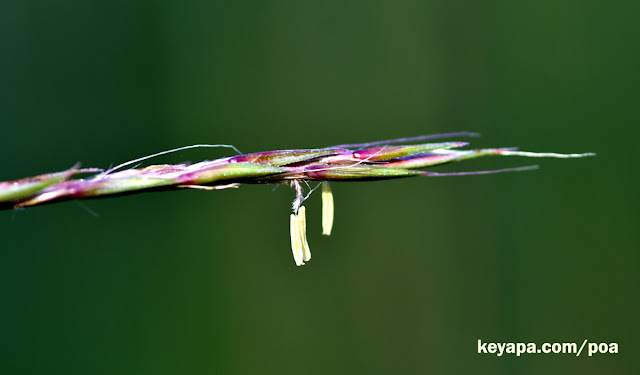 |
Pristine forest understory sans Microstegium vimineum
|
The invasive grass Microstegium vimineum (Stiltgrass) is so ubiquitous in New Jersey forested areas that it would be hard to imagine a time when it wasn't the noxious weed that it is right now.
In fact, its spread from Tennessee in 1919 was well documented, with the species reaching Virginia in 1931, North Carolina in 1933, and Alabama in 1934. From there it spread to Pennsylvania and Kentucky in 1938, Delaware in 1942, and finally New Jersey in 1959. But even in the early 1980s, it was still fairly uncommon in NJ (Hunt et al, 1992).
 |
Surveyed areas (A) Stockbridge, MA parks, and (B) Storm King State Park, NY
|
There are still states in the Northeast where M. vimineum has not been documented, or is only known from a few samples, and a quick look at the map of the species at EDDMaps shows the approximate boundaries of its distribution.
In order to confirm the presence or absence of this invasive species, I hiked an area at the boundary of its main invasion front (icon A in image above, in Massachusetts), as well as a spot some distance to the south (icon B, in New York State). M. vimineum was first discovered at 3 sites in NY in the early 1990s, and appeared in Hamden County, Massachusetts in 1998, so the species is a fairly recent arrival to at least the latter state.
 |
Surveyed areas in Massachussetts
|
In Massachusetts, I hiked several state and public parks, including:
- Mount Greylock State Reservation
- Alford Springs Trail
- Monument Mountain
- Benedict Pond Loop and Appalachian Trail in Beartown State Forest
- Basin Pond Loop and Appalachian Trail in October Mountain State Forest
In none of these hikes in MA did I see a single specimen of
M. vimineum, although there were quite a few look-alikes. I even surveyed a short 100 meter portion of the Appalachian Trail in October Mountain State Forest near Becket Rd, where the species was reportedly spotted in 2013, as in
here. But again, I failed to find evidence of stiltgrass, which made me wonder whether previous sightings of the species in the area had been mis-identifications of some other plant, such as
Leersia virginica.
 |
Stiltgrass look-alikes
|
What I found instead was a quite diverse understory, with beautiful ferns dominating the shadier undisturbed areas, and many different kinds of other herbaceous plants sharing the limelight! It was quite a refreshing change from the carpets of M.vimineum that sometimes even lines the sides of paths in NJ.
 |
Ferns
|
It was a different story across the border in NY state, where I found ample evidence of the species in Storm King State Park. In fact, the small parking lot next to the trailhead had a dense carpet of stiltgrass sprawling under the tree canopy, as well as on decorative depressions in the parking lot wall.
 |
M. vimineum near trailhead parking lot of Storm King State Park, NY
|
Farther out in the trail itself, there were occasional clumps of the species along the sides, but nowhere near the level of infestation as in some NJ parks. Nevertheless, I saw ferns surrounded by stiltgrass, their fronds rising desperately out of the grass like the arms of a drowning swimmer.
 |
Ferns surrounded by Stiltgrass.
|
I'll admit that the sight of the invasive species generated some excitement in me, given that I had not seen it at all in the next door state. This feeling was however tempered by the knowledge that it is probably only a matter of time before that surveyed area in MA is also inundated with stiltgrass, perhaps through seeds carried along the Appalachian Trail. Studies have shown that without human or other intervention, that M. vimineum actually spreads quite slowly (Rauschert, 2010), but its advance has so far been steady and inexorable.
 |
Appalachian Trail near Beckett Road in October Mountain State Forest, MA
|
Literature Cited
EDDMapS. 2020. Early Detection & Distribution Mapping System. The University of Georgia - Center for Invasive Species and Ecosystem Health. Available online at http://www.eddmaps.org/; last accessed August 21, 2020.
Hunt, David M.; Zaremba, Robert E. 1992. The northeastward spread of Microstegium vimineum (Poaceae) into New York and adjacent states. Rhodora. 94(878): 167-170.
Rauschert, E.S.J. 2010. Slow spread of the aggressive invader, Microstegium vimineum (Japanese stiltgrass). Biological Invasions12:563-579










































